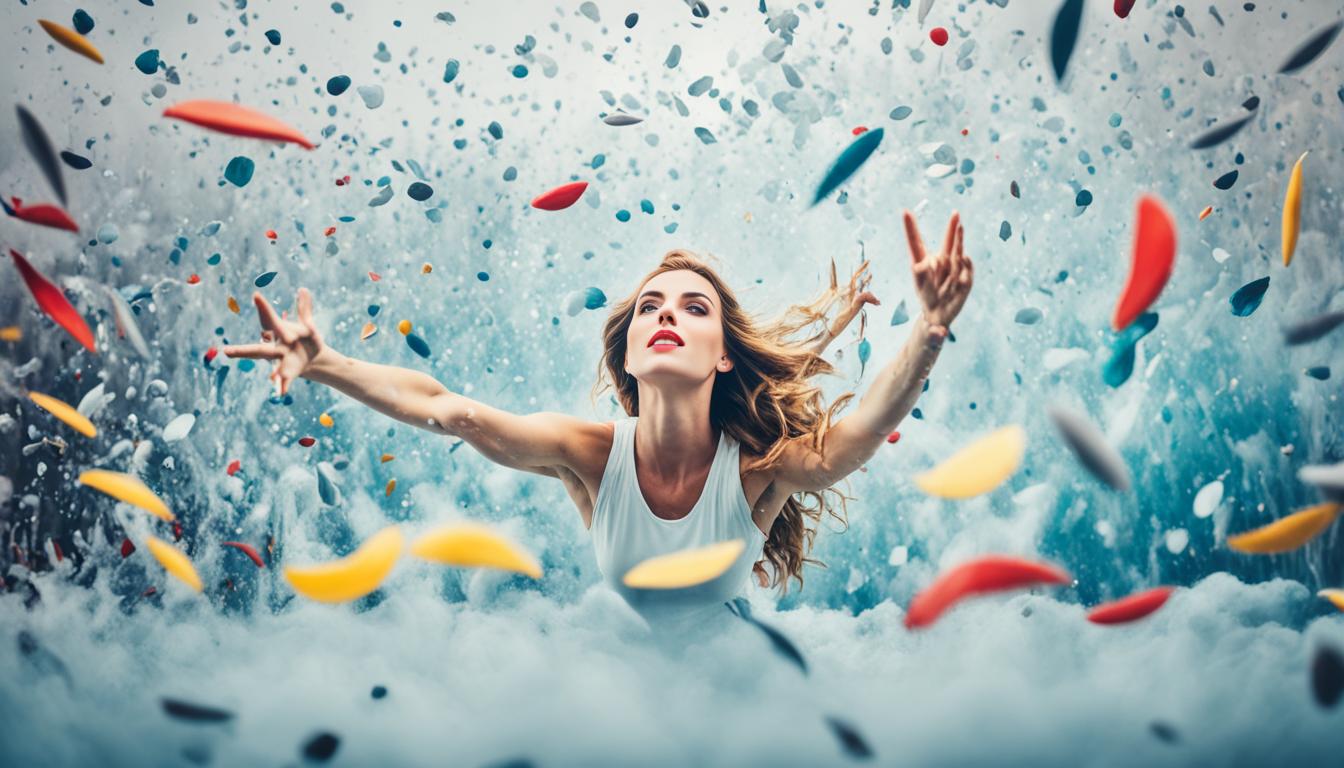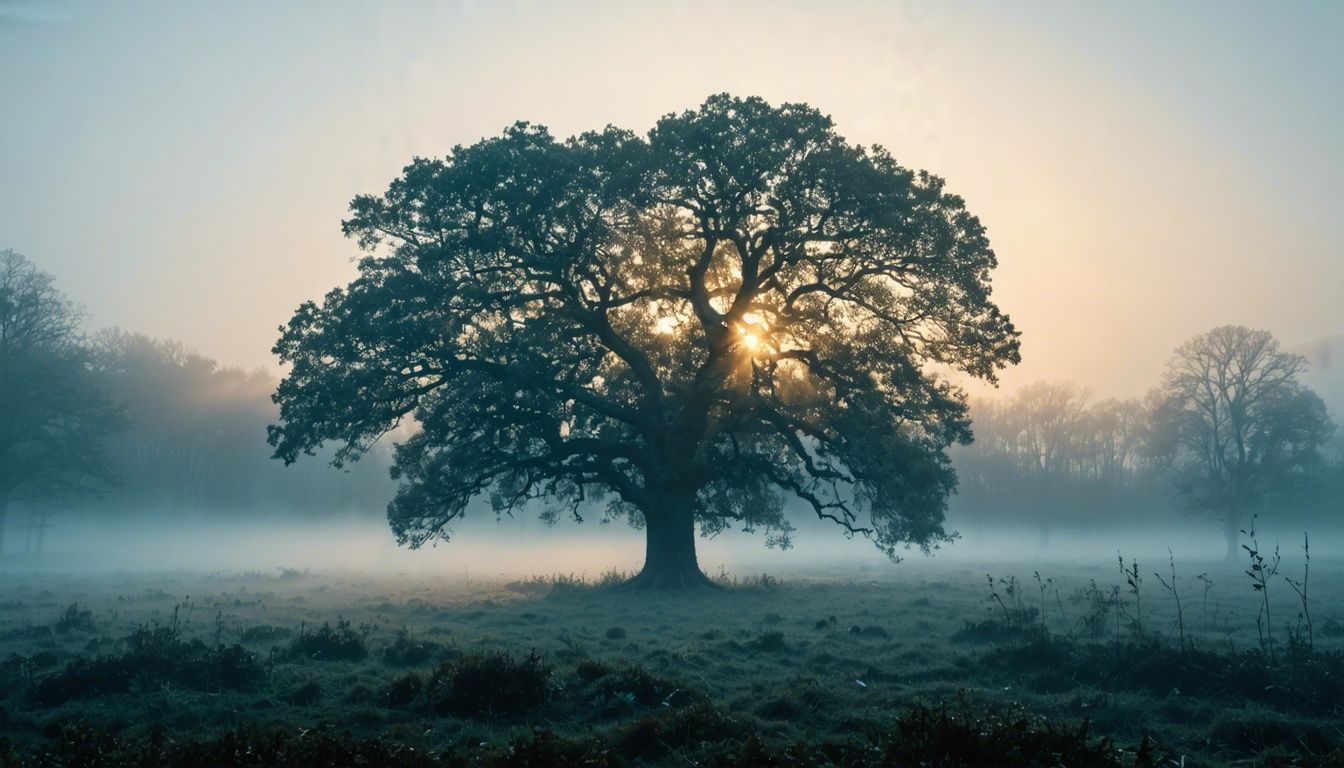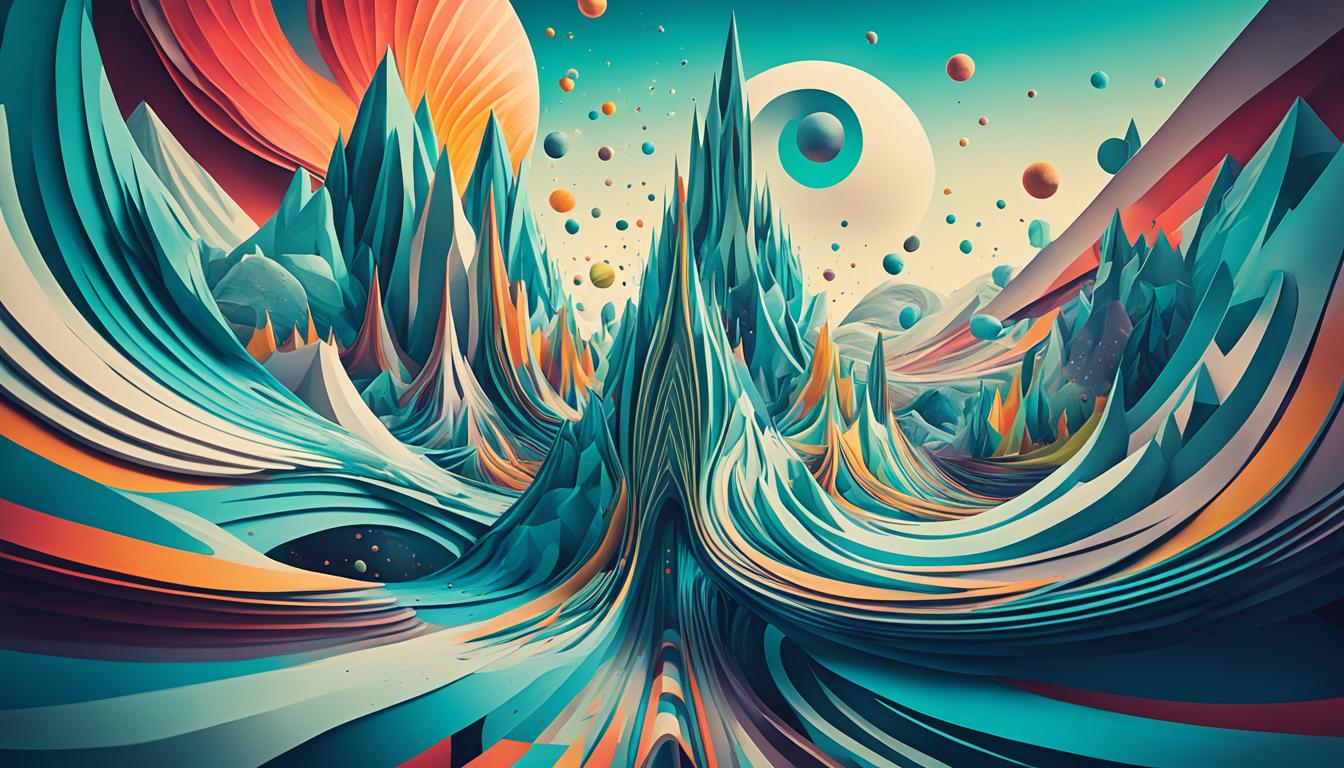Welcome to our beginner’s guide to understanding fine art photography. In this article, we will introduce you to the fascinating world of art photography and explore its basics, concepts, and techniques. Whether you are new to photography or an experienced photographer looking to explore this unique form of expression, this guide will provide you with the knowledge and inspiration you need to embark on your fine art photography journey.
Fine art photography is not solely about capturing what is seen; it is about conveying emotions, stories, and ideas through images. Unlike commercial or photojournalistic photography, fine art photography aims to create a visual representation of the artist’s vision and share it with others. It goes beyond the technical aspects of photography and delves into the realm of creativity and interpretation.
To truly understand fine art photography, it is important to grasp the principles and concepts that guide this art form. From careful composition and attention to detail to exploring unconventional perspectives and experimenting with light, fine art photography allows for unlimited creative expression.
Throughout this guide, we will take you through the process of creating fine art photography, from conceptualizing an idea to executing it through careful planning, composition, and post-processing. We will also explore various sources of inspiration that can help ignite your creativity and develop your unique artistic vision.
Key Takeaways:
- Fine art photography focuses on conveying emotions, stories, and ideas through images.
- It goes beyond the technical aspects of photography and embraces creativity and interpretation.
- The process of creating fine art photography involves careful planning, composition, and post-processing.
- Finding inspiration from various sources can help develop your artistic vision.
- Experimenting with techniques and continuously evolving your skills is crucial in fine art photography.
Now, let’s dive into the world of fine art photography and unleash your creative potential!
The Process of Creating Fine Art Photography
Creating fine art photography is a meticulous and thoughtful endeavor. It involves combining technical mastery with conceptual thinking to produce images that evoke emotion, tell a story, and convey a unique artistic vision. In this section, we will explore the process behind creating fine art photos, highlighting the key concepts and steps that guide photographers in their artistic journey.
At the heart of fine art photography is the intention to express ideas, emotions, memories, and thoughts through the subjects and composition of the image. It is not simply about capturing a moment, but rather about crafting a visually compelling and thought-provoking image.
To begin the process, fine art photographers often start with a clear vision or concept in mind. This could be inspired by personal experiences, philosophical ideas, or even abstract concepts. The photographer’s vision serves as a guiding force throughout the entire creation process.
One of the first steps in creating fine art photography is selecting a subject. The subject could be a person, an object, a landscape, or even a combination of elements. It should align with the photographer’s vision and convey the intended message or emotion.
Once the subject is chosen, the next step is planning the composition. Composition plays a vital role in fine art photography as it determines how the elements within the frame interact and create a visual impact. Fine art photographers consider factors such as balance, symmetry, leading lines, and the rule of thirds to create harmonious and visually engaging compositions.
Experimenting with lighting is another crucial aspect of the process. Lighting can dramatically influence the mood and atmosphere of a photograph. Fine art photographers explore natural and artificial lighting techniques, shadows, and highlights to evoke specific emotions or emphasize certain elements within the frame.
Editing is an integral part of the process as well. Fine art photographers use editing software to fine-tune their images, enhancing colors, adjusting exposure, and adding artistic effects. The goal of editing is not to alter the reality but to enhance the intended message or mood of the photograph.
Exploring different perspectives and angles is also a key element in creating fine art photography. Fine art photographers experiment with unique viewpoints, unconventional framing, and abstract perspectives to bring a fresh and distinctive interpretation to their work.
By meticulously considering each step of the process, fine art photographers strive to create images that are not only visually captivating but also rich in meaning and emotion. Now that we’ve explored the process of creating fine art photography, let’s delve into finding inspiration for this unique art form.
Inspiring Quotes
“Photography is a way of feeling, of touching, of loving. What you have caught on film is captured forever… It remembers little things, long after you have forgotten everything.” – Aaron Siskind
Key Concepts in Creating Fine Art Photography
| Concept | Description |
|---|---|
| Vision | The guiding idea or emotion that drives the creation of a fine art photograph. |
| Subject | The main element or focus of the photograph that communicates the intended message or emotion. |
| Composition | The arrangement of elements within the frame to create a visually appealing and meaningful image. |
| Lighting | The manipulation of light sources to enhance the mood, atmosphere, and visual impact of an image. |
| Editing | The post-processing stage where fine-tuning, enhancing, and adding artistic effects are applied to the image. |
| Perspective | The unique viewpoint or angle from which the photograph is taken, offering a fresh interpretation of the subject. |
Finding Inspiration for Fine Art Photography
Finding inspiration is a vital part of the creative process in fine art photography. It involves exploring diverse sources and experiences that can ignite ideas and contribute to the development of a unique artistic vision.
To find inspiration, we can start by clearing our minds and taking a break from our photography practice. Engaging in other activities, such as going for a walk in nature or practicing mindfulness, can help us refresh our perspective and open our minds to new ideas.
One valuable source of inspiration is other photographers and artists. Looking to their work can provide us with fresh ideas and insights. We can learn from their creative process, observe their composition techniques, and identify the emotions and stories they evoke with their photography.
Visiting art galleries and exhibitions is another excellent way to find inspiration. By exploring the work of other fine art photographers, we can witness different styles, themes, and approaches. These experiences in galleries can broaden our understanding of the art form and spark our own creativity.
Around us, we can surround ourselves with visual art in various forms. Books, magazines, and online galleries dedicated to fine art photography can expose us to different perspectives and ideas. Immersing ourselves in these visual representations can help us discover new concepts, themes, and techniques that we can apply to our own work.
Inspiration From Nature and Everyday Life
Nature is an abundant source of inspiration for fine art photography. Its beauty, patterns, colors, and textures can captivate our senses and motivate us to capture its essence through our lens. Whether it’s a majestic landscape, a delicate flower, or an awe-inspiring wildlife moment, nature offers endless opportunities for creative expression.
Everyday life also provides us with an array of inspiring subjects and moments. From the mundane to the extraordinary, capturing the emotions, stories, and interactions in our everyday world can uncover powerful images that tell captivating stories.
Exploring Emotions, Social Issues, and Personal Experiences
Art is often a reflection of personal experiences, emotions, and social issues. Fine art photography offers a medium to explore and express these elements visually. By delving into our own emotions and experiences, we can bring a personal touch to our photographs, creating images that resonate with others.
Social issues also present a wealth of inspiration for fine art photography. Exploring topics such as environmental concerns, inequality, or cultural heritage can ignite a strong emotional response and drive us to create meaningful visual narratives.
Abstract Concepts and Ideas
Fine art photography allows us to explore abstract concepts and ideas, pushing the boundaries of our imagination. By experimenting with composition, lighting, and post-processing techniques, we can convey abstract concepts visually. Through symbolism, metaphor, or visual poetry, we can create images that challenge viewers’ perceptions and provoke thought and emotion.
Exploring these different sources of inspiration can help fine art photographers develop a rich and diverse portfolio. As we uncover what resonates with us personally, we can use it as a starting point for our artistic journey, creating photographs that are both meaningful and visually captivating.
Tips and Techniques for Fine Art Photography
Looking to enhance your fine art photography skills? Here are some valuable tips and techniques to elevate your work:
- Master the technical aspects: Develop a strong foundation in photography techniques, including understanding exposure, composition, and focusing. A firm grasp of these fundamentals will allow you to create technically sound images that serve as a solid base for your artistic vision.
- Experiment with lighting: Lighting plays a crucial role in fine art photography. Explore different natural and artificial lighting sources to create mood, depth, and dimension in your images. Experiment with shadows and highlights to add drama and intrigue to your compositions.
- Focus on composition: Composition is key in fine art photography. Pay attention to the placement of subjects, lines, shapes, and negative space within the frame. Use the rule of thirds, leading lines, and symmetry to create visually pleasing and captivating compositions that draw the viewer’s attention.
- Embrace minimalism: Simplify and distill your images to their core elements. Sometimes, less is more. Focus on capturing the essence of your subject by removing any distractions and emphasizing its unique qualities.
- Explore unconventional perspectives: Break away from traditional viewpoints and challenge yourself to see the world from a different angle. Experiment with low angles, bird’s eye views, or even abstract close-ups to present your subject in a fresh and captivating way.
- Use post-processing techniques selectively: Fine art photography allows for creative editing possibilities. Consider using post-processing tools and techniques to enhance the mood, colors, and textures of your images. However, use these techniques judiciously to maintain the integrity and authenticity of your work.
- Seek constructive feedback: Share your work with trusted peers, mentors, or online photography communities. Embrace constructive criticism as an opportunity for growth and learning. Other perspectives can provide valuable insights and help you refine your artistic vision.
“Photography is an art of observation. It has little to do with the things you see and everything to do with the way you see them.” – Elliot Erwitt
By applying these tips and techniques, you can enhance your fine art photography skills and create compelling images that resonate with viewers on an emotional level. Remember, fine art photography is a journey of self-expression and storytelling, so don’t be afraid to push boundaries, experiment, and let your creativity soar.

Conclusion
Fine art photography is a powerful and transformative medium that allows photographers to express their ideas, emotions, and messages through captivating images. By understanding the basics of fine art photography and embracing the creative process, photographers can develop their own unique style and voice. Whether you’re a beginner or an experienced photographer, diving into the world of fine art photography opens up endless possibilities for artistic exploration.
Throughout this beginner’s guide to fine art photography, we have explored the essence of this art form: its focus on content, storytelling, and symbolism. We have learned that fine art photography goes beyond just capturing what is seen and aims to create a deeper connection with the viewer. It offers an avenue for translating visions, emotions, and thoughts into tangible works of art.
To embark on your journey in fine art photography, take inspiration from various sources, experiment with different techniques, and continuously evolve your skills. Explore the works of other photographers, visit art galleries, and surround yourself with visual art to fuel your creative fire. Remember, there are no limits when it comes to fine art photography. Let your imagination roam free, and let your camera be the brush with which you paint your own artistic masterpiece.
FAQ
What is fine art photography?
Fine art photography is a form of artistic expression that goes beyond simply capturing what is seen. It focuses on conveying ideas, emotions, and messages through images and aims to create something that resonates with the viewer on a deeper level.
How is fine art photography different from other types of photography?
Fine art photography is not solely representational but rather symbolic. It involves bringing a vision, emotion, or state of mind to life through a photograph. Unlike commercial or photojournalistic photography, it is not bound by practical considerations or traditional rules of photography, allowing for more creative freedom and experimentation.
What is the process of creating fine art photography?
Creating fine art photography involves careful planning and execution. It combines the technical aspects of photography with the conceptual thinking behind the content. Fine art photographers often have a clear vision or concept in mind before starting a photoshoot and use photography as a means to express their ideas, emotions, memories, and thoughts through the subjects and composition of the image.
Where can I find inspiration for fine art photography?
Inspiration for fine art photography can come from various sources, including nature, everyday life, emotions, social issues, personal experiences, or abstract concepts. Ways to find inspiration include taking a break or engaging in other activities to clear your mind, looking to other photographers and artists for ideas and learning from their creative process, visiting art galleries and exhibitions, and surrounding yourself with visual art in the form of books, magazines, or online galleries.
What are some tips and techniques for fine art photography?
Some tips and techniques for fine art photography include paying attention to detail, composition, and meaning in your images, experimenting with different lighting and editing techniques, exploring different perspectives and angles, and planning the composition of your photos carefully. It is also important to constantly evolve your skills and keep learning and experimenting with new approaches.
How can I develop my own unique style in fine art photography?
Developing your own unique style in fine art photography takes time and experimentation. It involves finding what resonates with you personally, exploring different techniques, subjects, and concepts, and continually refining and evolving your work. By staying true to your own vision and expressing your ideas and emotions through your images, you can develop a distinct voice and style in fine art photography.
How Do Ethical Considerations Impact the Practice of Fine Art Photography for Beginners?
When starting in fine art photography, beginners must consider ethical implications in their work. Ethical considerations in photography are essential to ensure the respectful portrayal of subjects and the responsible use of images. Understanding and incorporating ethical principles will contribute to the credibility and integrity of the practice.




